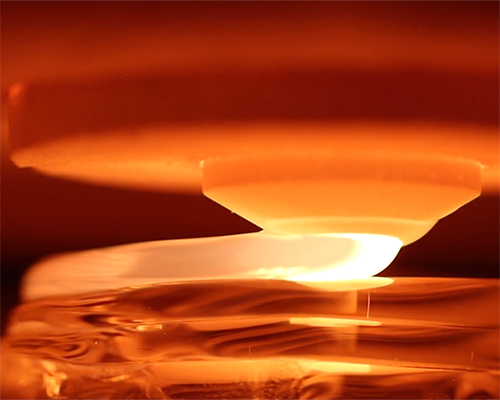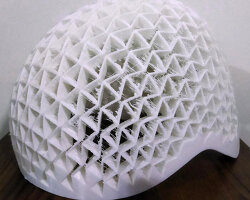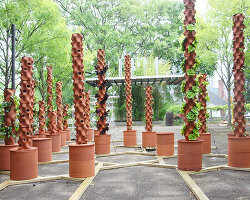mediate matter + MIT glass lab pioneering progressive 3D glass printing
all images courtesy of mediate matter group
from core forming processes for bead making in ancient egypt to metal blow pipe glass methods during roman times, mediate matter group at the MIT media lab had to looked back to develop an innovative way to print vases. the process called ‘glass 3D printing’ (G3DP) is an additive manufacturing platform designed to print optically transparent glass. the geometry and optical change prompted by form, transparency and color alteration can drive notable implications for all things glass.
video courtesy of the mediate matter group
the program is based on a dual heated chamber concept. the upper chamber acts as a kiln cartridge – a thermally insulated ventricle, while the lower compartment serves to cool the glass slowly, in order to remove internal stresses. the operation functions at approximately 1,900°F (1,036°C) and can contain enough material to build a single architectural piece. finally, the molten material gets funneled through an alumina zircon silica nozzle, and layered like traditional 3D printing. the project merges modern technologies, with age old routine glass tools and technologies manufacturing novel glass structures with countless future applications.
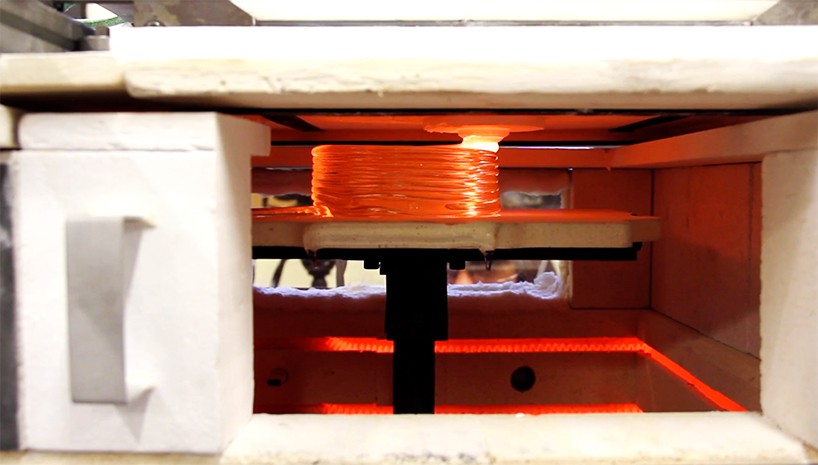 the printing is done at 1,900°F (1,036°C)
the printing is done at 1,900°F (1,036°C)
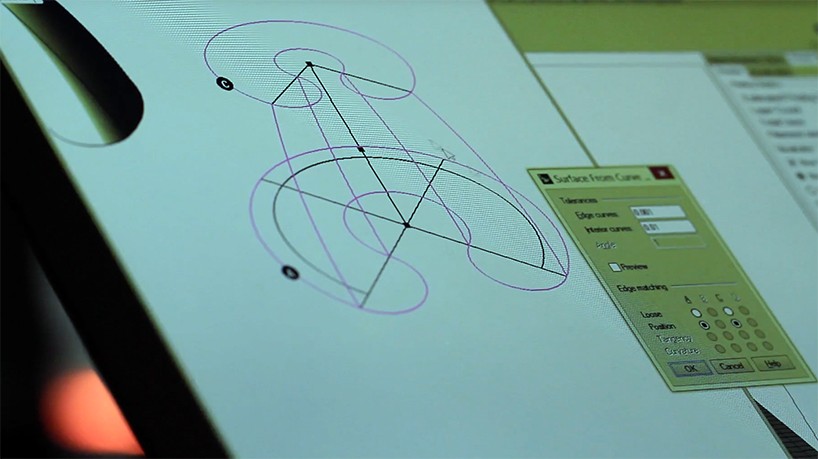 shaping is done on CAD
shaping is done on CAD
 the glass material being prepared
the glass material being prepared
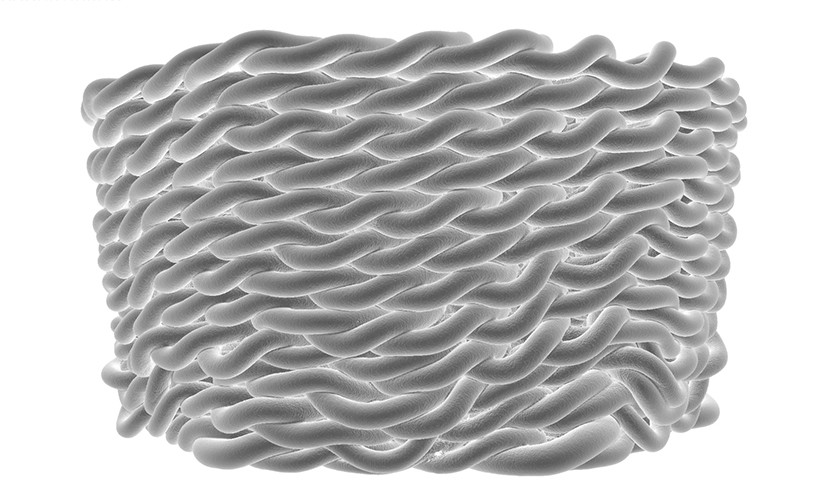 the CAD rendering
the CAD rendering
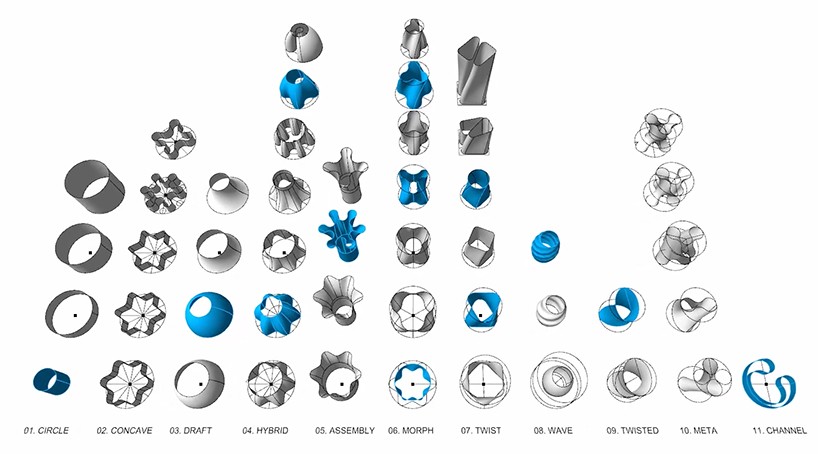 all the 3D models ready to be created
all the 3D models ready to be created
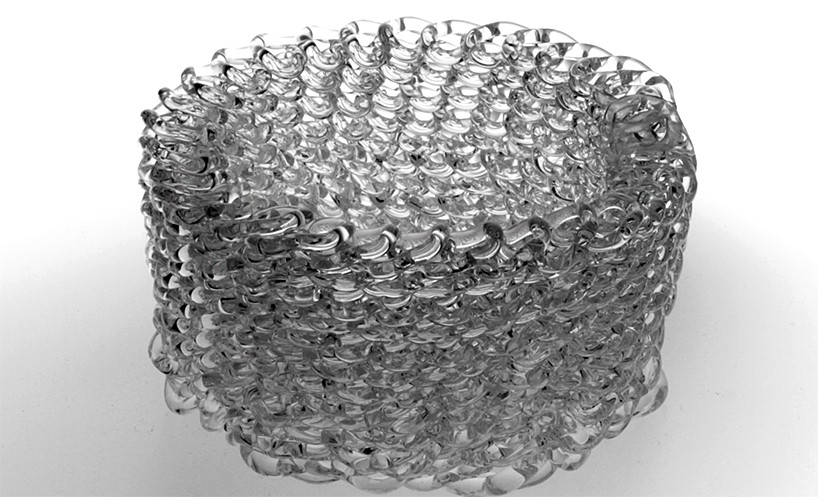 the result after the 3D glass printing
the result after the 3D glass printing
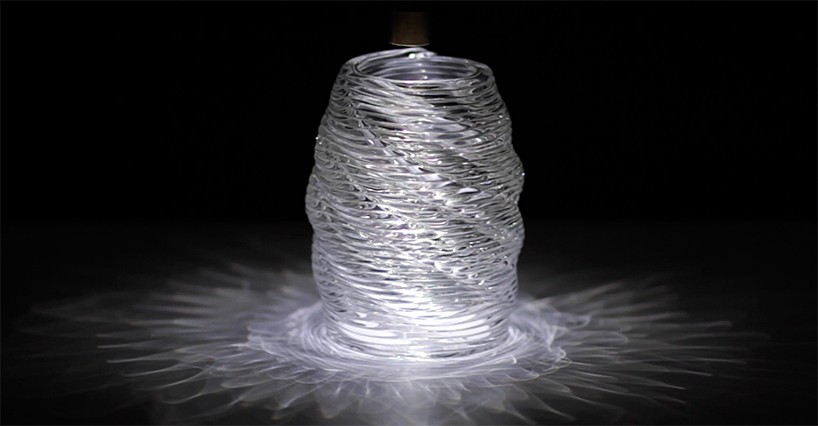 the vase lit from the top, creating unique spectrums
the vase lit from the top, creating unique spectrums
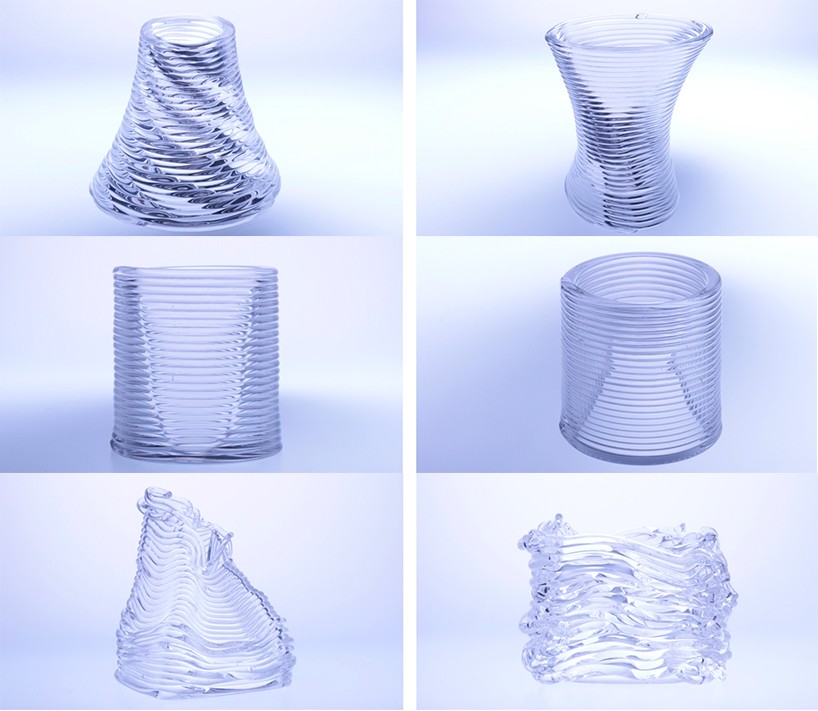 different variations done by 3D glass printing
different variations done by 3D glass printing
